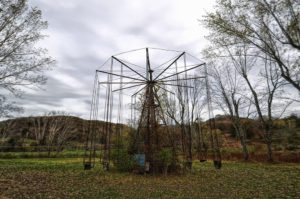The Haunting Legacy of Trans-Allegheny Lunatic Asylum
Steeped in history and shrouded in mystery, the Trans-Allegheny Lunatic Asylum stands as a stark reminder of the past’s complex relationship with mental health care. Established in 1864 amidst the chaos of the Civil War, this West Virginia institution was initially a beacon of hope for those with nowhere else to turn. However, as the decades rolled on, the asylum became notorious for its overcrowding and inhumane conditions.
Over the years, the facility expanded, with construction continuing well into the 1880s. Despite the expansion, the asylum struggled with severe issues, including unsanitary conditions and inadequate heating and lighting which were highlighted in reports from as early as 1949. The 1950s saw the disturbing implementation of the West Virginia Lobotomy Project, a grim chapter in its history.
A Turn for the Worse
By the 1980s, the situation within the walls of Trans-Allegheny had deteriorated further, with reports of uncontrollable patients being confined in cages. This period marked a low point in the asylum’s operation, reflecting the urgent need for reform in mental health care practices. The eventual closure of the asylum in 1994 was a result of such reforms, with patients relocated to community homes to receive care in more humane settings.
Today, the Trans-Allegheny Lunatic Asylum sits empty, save for the museum spaces that preserve its artifacts and the chilling paranormal tours that invite the curious to explore its haunted halls.
Ghosts of Trans-Allegheny
The asylum is reputed to be one of the most haunted locations in West Virginia, drawing ghost hunters and paranormal enthusiasts from around the country. Among the spirits said to roam its corridors is Lily, a young girl who tragically died of pneumonia in the 1860s. Visitors report hearing her eerie cries and laughter echoing through the asylum.
The ghosts of Civil War soldiers are also rumored to haunt the premises, a nod to the building’s origins during the tumultuous wartime era. More contemporary spirits include Jesse, who met his end in a bathtub due to a heart attack, and Jim James, a former patient who manifests his presence by igniting lighters left by visitors.
Perhaps the most unsettling tale is that of a patient who was murdered by his roommates, whose spirit is said to linger in the hallways, forever trapped within the confines of the asylum.
The Trans-Allegheny Lunatic Asylum not only offers a window into the dark history of psychiatric treatment but also serves as a canvas for some of the most compelling ghost stories in American folklore. Its walls, rich with the imprints of past lives, continue to intrigue and terrify those who walk its abandoned halls.











Leave a Reply